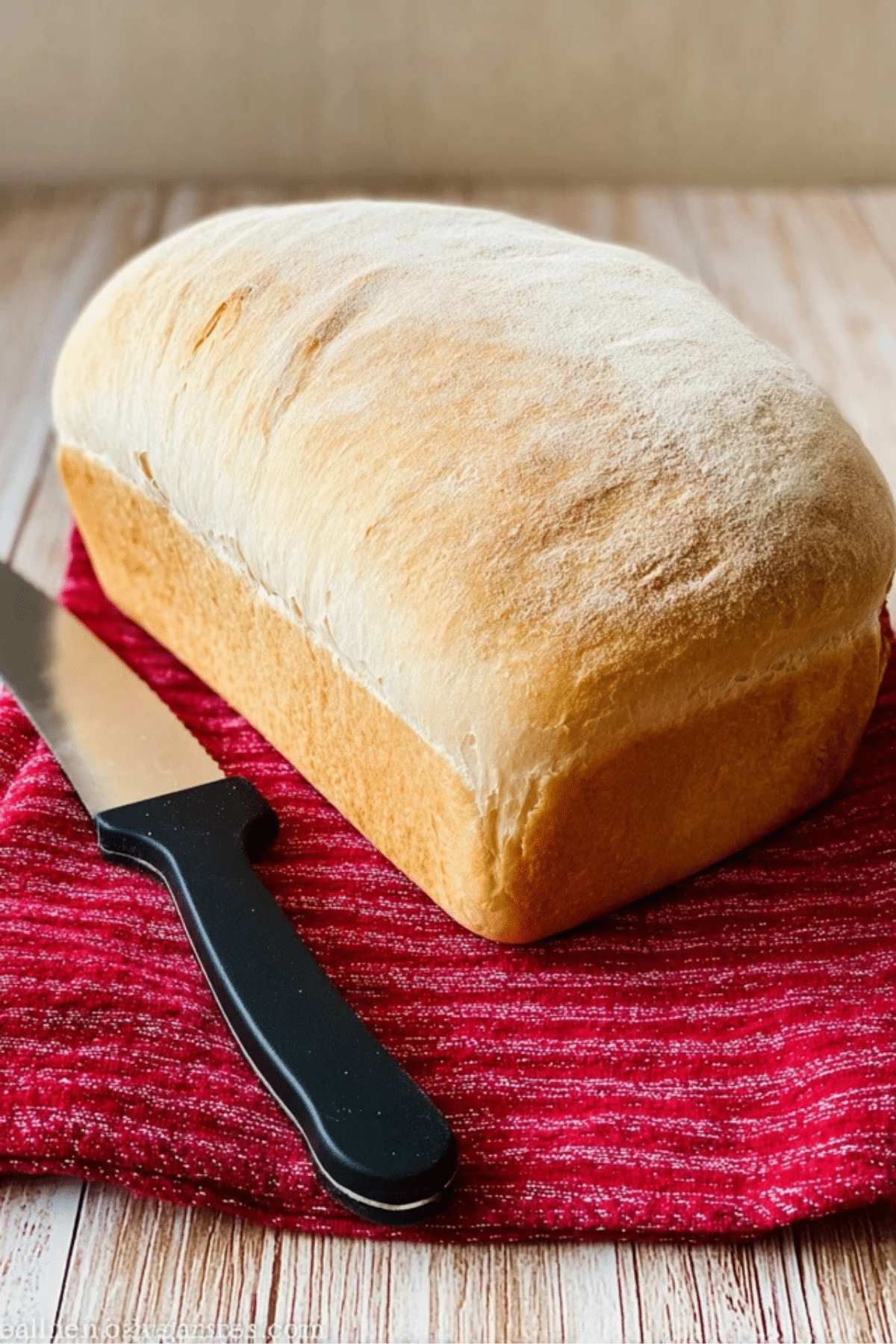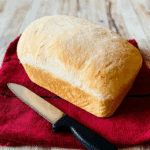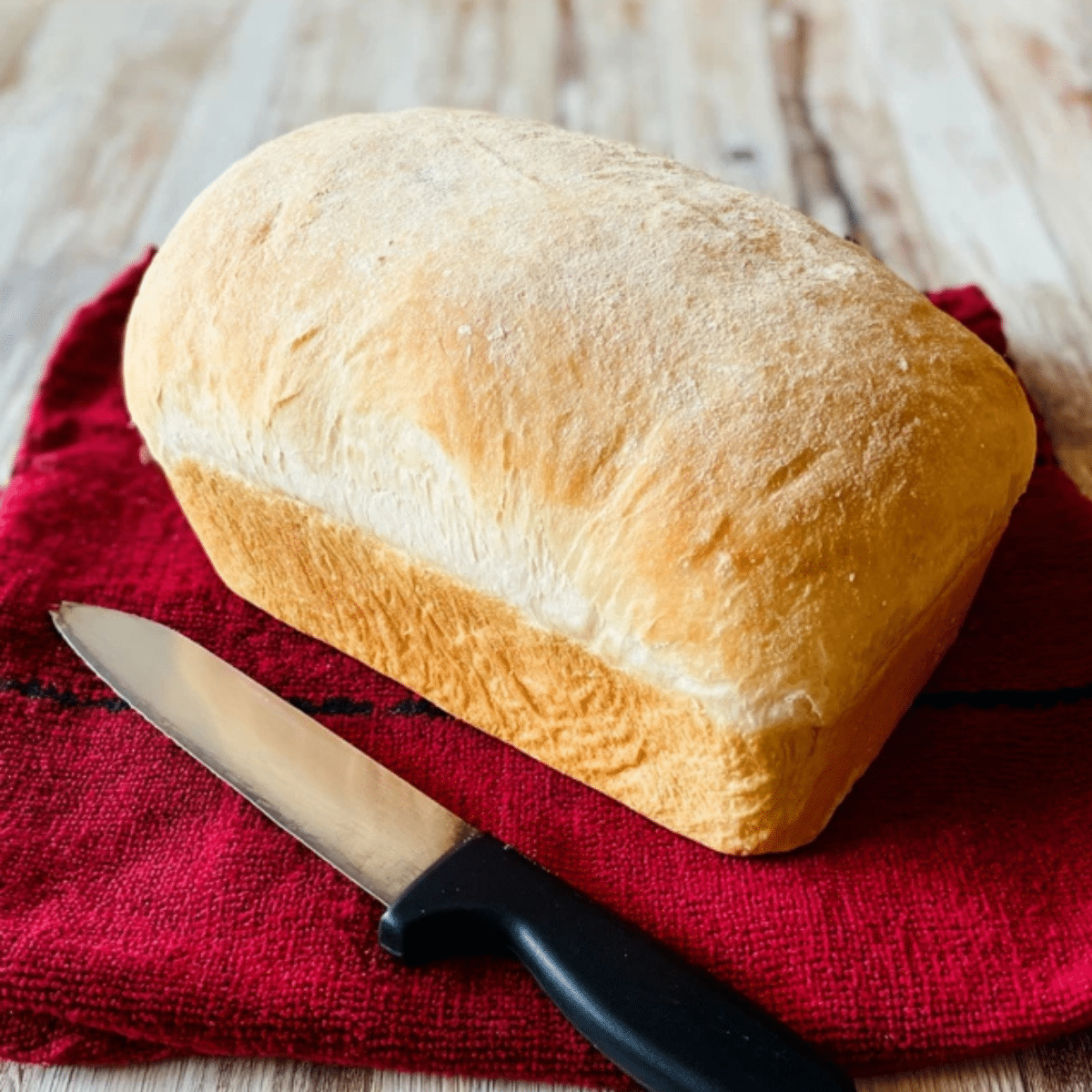Soft Crust Sourdough Bread is a delicious, easy-to-make loaf that is far healthier and tastier than anything you’ll find in stores. With a beautiful, soft crust and a tangy, flavorful interior, this bread is perfect for sandwiches, toast, or just enjoying with a little butter. Whether you’re a beginner or an experienced baker, this recipe is simple to follow and produces an irresistible homemade loaf that is as good for your gut as it is for your tastebuds.
Table of Contents
Why Soft Crust Sourdough Bread Is a Must-Try
This Soft Crust Sourdough Bread is incredibly easy to prepare and offers numerous benefits. Unlike store-bought bread, this homemade version is packed with natural probiotics, thanks to the fermentation process of sourdough. Not only does it have an intense and unique flavor, but it’s also far more nutritious. Sourdough is easier to digest, making it a great option for those who are sensitive to gluten. Plus, it’s rich in antioxidants and offers a delightful depth of flavor, ideal for various types of meals.
Ingredients
- Sourdough Starter: Essential for creating the tangy flavor and texture unique to sourdough bread.
- Purified Water: Ensures the dough stays hydrated and contributes to the dough’s elasticity.
- Large Egg: Adds richness and helps the dough hold together.
- Olive Oil: Gives the bread a slightly tender texture and enhances flavor.
- Honey: Adds moisture and aids in fermentation while giving a mild sweetness to the bread.
- Fine Sea Salt: Enhances flavor and balances the dough.
- Unbleached All-Purpose Flour: Provides the structure for the bread while maintaining a light and soft crumb.
Alternative Ingredient Suggestions
- Olive Oil: You can replace it with coconut oil or canola oil if preferred.
- Honey: Molasses is an excellent substitute if you’re looking for a more robust flavor profile.
- Unbleached Flour: For a slightly healthier version, try using whole wheat flour, but keep in mind that it will change the texture slightly.
Step-by-Step Instructions
- Mix Ingredients: In a stand mixer, combine the active sourdough starter, water, egg, olive oil, honey, salt, and flour. Mix lightly until the dough starts to come together.
- Knead the Dough: On low speed, knead the dough for 8–10 minutes using the dough hook attachment. Ensure that the dough passes the “windowpane test” (when a small piece of dough can be stretched thin without tearing).
- First Proofing: Form the dough into a ball and place it in a lightly oiled mixing bowl. Cover the bowl with plastic wrap or a clean kitchen towel. Allow it to ferment and proof for about 6 hours in a warm place.
- Shape the Loaf: Turn the dough out onto a lightly greased surface and roll it into a rectangle. Fold in the sides and roll it up into a log. Pinch the seams and ends to seal.
- Second Proofing: Place the dough seam-side down in a greased 8.5×4.5-inch loaf pan. Cover with plastic wrap and let it proof for 1.5–2 hours or until the dough rises above the pan by an inch.
- Bake: Preheat your oven to 350°F (175°C). Bake the bread for 25–30 minutes or until golden brown and sounds hollow when tapped on the bottom.
- Cool: Let the bread cool on a rack before slicing.

Tips & Tricks
- If you’re kneading by hand, expect to spend about 10 minutes developing the dough’s gluten.
- You can proof the dough overnight in the refrigerator for an even deeper flavor. Just bring it back to room temperature before the final proof.
- Store the bread wrapped in plastic or aluminum foil at room temperature for up to 5-7 days. Avoid refrigerating it, as it will dry out more quickly.
- Freezing this bread is simple! Just wrap it tightly in plastic wrap and place it in a ziplock freezer bag. It will stay fresh for up to 3 months.
Pairing Ideas and Variations
Soft Crust Sourdough Bread pairs beautifully with a wide range of toppings and meals. Try it with a hearty soup, as a base for sandwiches, or toasted with a drizzle of olive oil and a sprinkle of sea salt. For variations, you can add herbs or garlic for extra flavor or even try a gluten-free version by swapping the flour for a gluten-free blend.
Health Benefits of Sourdough Bread
Beyond its delicious flavor, sourdough bread offers numerous health benefits. The natural fermentation process increases the bioavailability of nutrients, making it easier for your body to absorb vitamins and minerals. Additionally, sourdough is rich in beneficial bacteria, supporting gut health and digestion. For those who are gluten-sensitive, sourdough’s longer fermentation period breaks down gluten, making it easier to digest compared to other types of bread.
With all its health benefits, incredible flavor, and easy-to-follow instructions, this Soft Crust Sourdough Bread is sure to become a staple in your kitchen. Enjoy the homemade touch and feel good about the quality ingredients you’re using!
Conclusion
In conclusion, this Soft Crust Sourdough Bread recipe is a must-try for anyone who loves baking or enjoys homemade bread. With its soft, flavorful crust and health benefits, it’s far superior to store-bought options. Whether you’re making it for sandwiches, toast, or simply to enjoy with a bowl of soup, this bread is sure to become a household favorite. The best part is that it’s easy to make and versatile, allowing you to tweak the recipe to your liking. So, grab your ingredients and start baking — you won’t regret it!
FAQs
1. How long does homemade soft crust sourdough bread last?
Homemade Soft Crust Sourdough Bread can last for 5–7 days when stored at room temperature, wrapped in plastic wrap or aluminum foil. It’s important not to store it in the refrigerator as this will dry it out more quickly.
2. Can I make this sourdough bread without a stand mixer?
Yes! While a stand mixer makes the process easier, you can knead the dough by hand. Just be prepared to spend around 10 minutes developing the gluten, and it may take a bit longer to get the perfect texture.
3. Can I use whole wheat flour for this sourdough recipe?
Yes, you can substitute whole wheat flour for all-purpose flour. However, this may result in a denser loaf. You might need to adjust the hydration levels slightly since whole wheat flour absorbs more water than all-purpose flour.
4. Is sourdough bread better for digestion than regular bread?
Yes! The fermentation process in sourdough bread makes it easier to digest than regular bread. The natural probiotics in sourdough are beneficial for gut health, and the long fermentation breaks down some of the gluten, making it easier for those with mild gluten sensitivities to digest.
More Relevant Recipes
If you loved the Soft Crust Sourdough Bread, you might also enjoy these delicious recipes that pair perfectly with it or follow a similar theme of hearty, comforting meals and baking.
- Dutch Oven Sourdough Bread Recipe: Another take on homemade sourdough, baked in a Dutch oven for a perfectly crisp crust and soft interior.
- Sourdough Garlic Bread Easy Cheesy: A flavorful twist on sourdough, perfect for serving alongside your favorite pasta or as a snack.
- Honey Butter Sweet Alabama Pecan Bread: A slightly sweeter bread option, with the perfect balance of honey and buttery richness.

Soft Crust Sourdough Bread Recipe
- Total Time: 8 hours 15 minutes
- Yield: 14 servings
- Diet: Vegetarian
Description
This Soft Crust Sourdough Bread recipe is a must-try for anyone who enjoys baking or loves homemade bread. With a deliciously soft crust and a tangy, flavorful interior, this bread is perfect for sandwiches, toast, or just enjoying with a little butter. It’s easy to make and offers numerous health benefits, including probiotics for gut health and a more digestible loaf compared to store-bought options.
Ingredients
- 1 Cup Sourdough starter
- ½ Cup Purified water
- 1 Large egg
- 1 Tbsp Olive oil
- 1 ½ Tbsp Honey
- 1 tsp Fine sea salt
- 2 ¾ Cups Unbleached All-purpose flour
Instructions
- In a stand mixer, combine the sourdough starter, water, egg, olive oil, honey, salt, and flour. Mix lightly until the dough starts to come together.
- On low speed, knead the dough for 8-10 minutes using the dough hook. The dough should pass the windowpane test.
- Form the dough into a ball and place it in a lightly oiled mixing bowl. Cover and allow it to proof in a warm place for 6 hours.
- Turn the dough out onto a lightly greased surface and roll it into a rectangle. Fold in the sides and roll it up into a log, pinching the seams and ends closed.
- Place the dough seam-side down into a greased loaf pan and let it proof for 1.5-2 hours until it rises above the top of the pan.
- Preheat the oven to 350°F (175°C). Bake the bread for 25-30 minutes until it is golden brown and sounds hollow when tapped.
- Allow the bread to cool on a rack before slicing.
Notes
- If kneading by hand, expect to spend about 10 minutes developing the dough’s gluten.
- For an overnight option, proof the dough in the refrigerator and complete the final proofing at room temperature.
- Store the bread at room temperature wrapped in plastic wrap or foil for up to 5–7 days. Do not refrigerate.
- The bread can be frozen after baking and kept for up to 3 months.
- Prep Time: 15 minutes
- Cook Time: 30 minutes
- Category: Bread, Breakfast, Snack
- Method: Baking
- Cuisine: American
Nutrition
- Serving Size: 1 slice
- Calories: 126 kcal
- Sugar: 4 g
- Sodium: 200 mg
- Fat: 2 g
- Saturated Fat: 0.5 g
- Unsaturated Fat: 1.5 g
- Trans Fat: 0 g
- Carbohydrates: 22 g
- Fiber: 2 g
- Protein: 4 g
- Cholesterol: 30 mg

